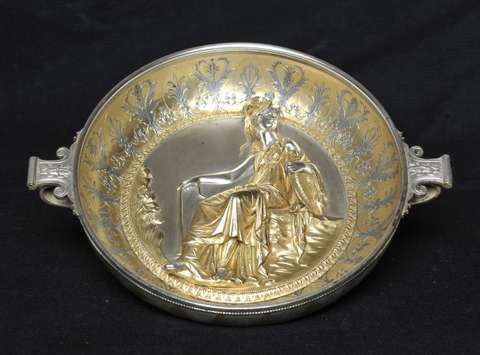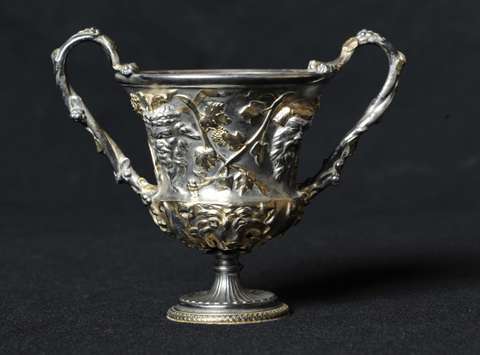Ancient Roman silver tableware found outside imperial frontiers
The Hildesheim Treasure ranks among the biggest silver hoards from the period when the Roman Republic was being transformed into an empire.
In 1868, approximately 70 pieces of ancient Roman tableware, mostly from the Augustan period, were found close to Hildesheim, Germany, some 250 kilometres from the imperial frontier on the Rhine. This exhibition contains galvanoplastic copies made in 1934 after the silver originals which were lost and probably destroyed during World War Two. The copies from the Museo della Civiltá Romana testify to the Roman silver tableware known as “The Hildesheim Treasure”.
The Hildesheim Treasure ranks among the biggest silver hoards from the period when the Roman Republic was being transformed into an empire. At the time of its discovery, the hoard consisted of around 70 valuable silver objects. They form part of a table service consisting of vessels whose intended use was for eating as well as for storing, tasting and pouring liquids.
The vessels are intricately decorated, often with motifs from nature and lush plant ornaments, which is typical of the Augustan Period. Dionysian themes such as masks and animal skins feature prominently. The most striking objects on display contain three cups whose central emblems involve heads of the infant Hercules strangling serpents, of the goddess Cybele and of her lover Attis. One of the finest items is Minerva Bowl, featuring the image of the goddess on the throne holding a shield in the left hand and cane in the right with an owl, her symbol, nearby. The motifs decorating the vessels had at one time provided clues for lively debates among guests at banquets, which is also confirmed by written sources.
The circumstances causing these valuable items to end up buried in the ground are unclear, and so is their origin: Was this booty captured in the war campaigns waged in Germania during the first century AD? Might it be related to the defeat of the Roman commander Varus in 9 AD? The treasure might have belonged to a Germanic chief who had received it as a gift or, less probably, to a Roman merchant whose intention was to sell these valuable items to the tribes living along the Empire’s north-eastern border.
Location
Gosposka 15
1000 Ljubljana
Information and reservations:
T: +386 1 2412 500
T: +386 1 2412 506
E- mail: info@mgml.si, prijava@mgml.si
Opening hours
Tuesday–Sunday: 10.00–18.00
Mondays, 1 January, 1 November and 25 December: Closed
Tickets
Permanent exhibition Ljubljana. History. City. (basement and 2nd floor)
Solo visit: € 8 / reduced (children from the age of 7, students, over 60, unemployed, disabled): €6
Family ticket: 18€
Public guided tour: € 9.00 / reduced: € 7.00
Children up to the age of 6, ICOM, PRESS, SMD, disabled companions, tourist URBANA, licensed tourist guide: free of charge


